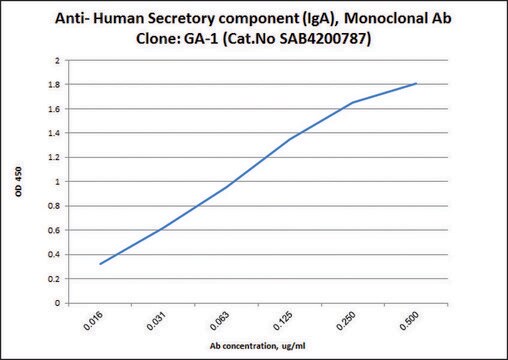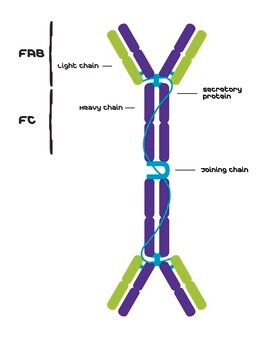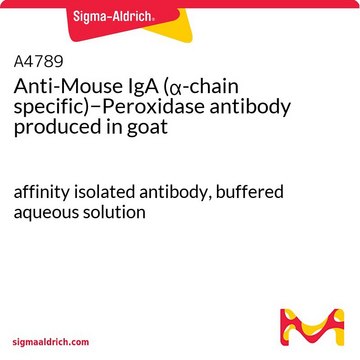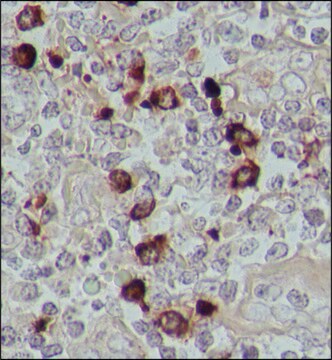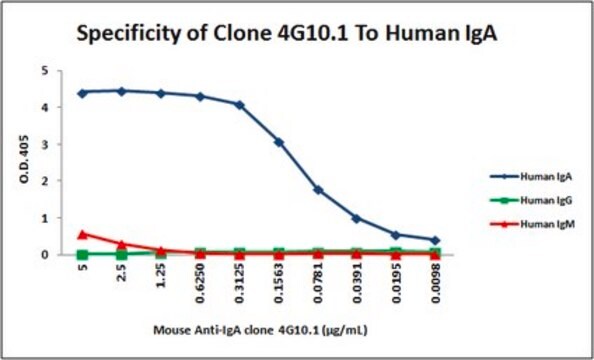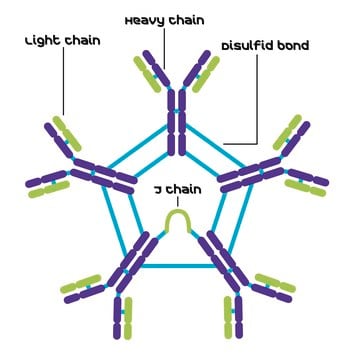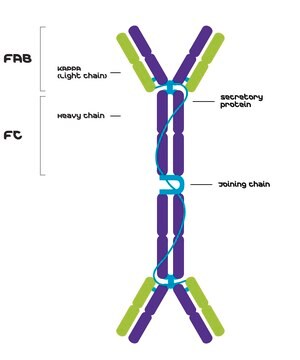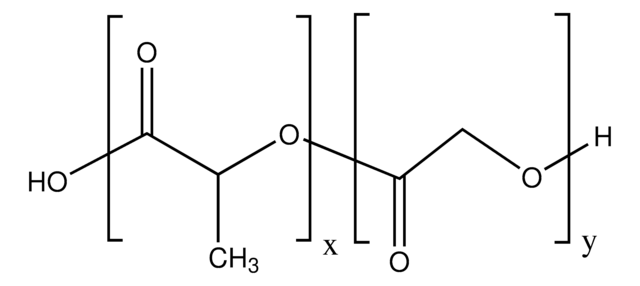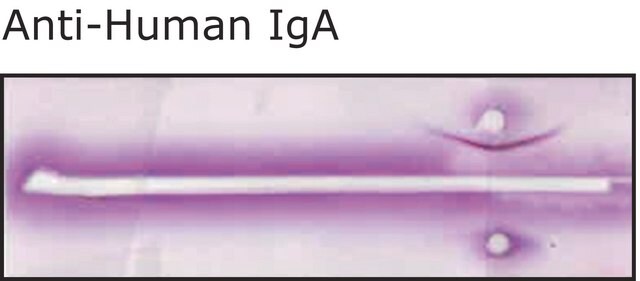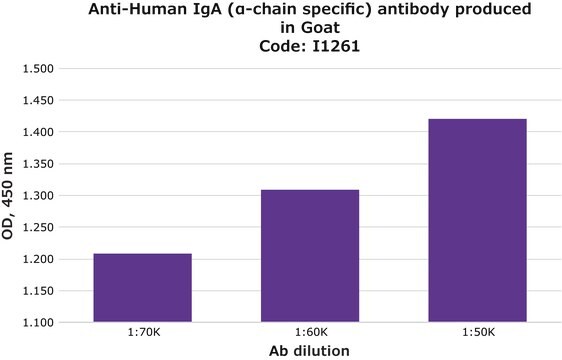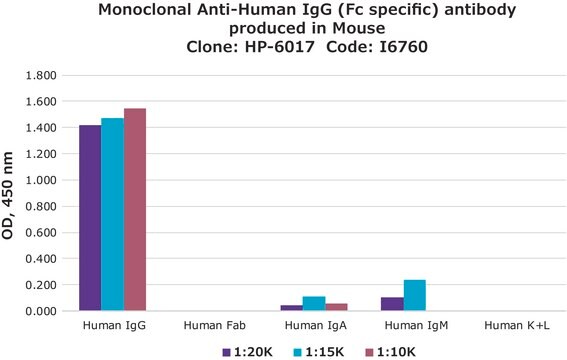I6635
Monoclonal Anti-Secretory Component (IgA) antibody produced in mouse
clone GA-1, ascites fluid
Sinónimos:
IgA Antibody, Secretory Component Antibody
About This Item
Productos recomendados
biological source
mouse
conjugate
unconjugated
antibody form
ascites fluid
antibody product type
primary antibodies
clone
GA-1, monoclonal
contains
15 mM sodium azide
species reactivity
human
technique(s)
indirect ELISA: 1:10,000
isotype
IgG1
shipped in
dry ice
storage temp.
−20°C
target post-translational modification
unmodified
General description
Monoclonal Anti-Secretory Component (IgA) antibody is specific for secretory human IgA and the free secretory component. The antibody does not bind to human IgG, IgM and IgE.
Immunogen
Application
Chromatin immunoprecipitation (1 paper)
Disclaimer
¿No encuentra el producto adecuado?
Pruebe nuestro Herramienta de selección de productos.
Storage Class
12 - Non Combustible Liquids
wgk_germany
nwg
flash_point_f
Not applicable
flash_point_c
Not applicable
Elija entre una de las versiones más recientes:
Certificados de análisis (COA)
¿No ve la versión correcta?
Si necesita una versión concreta, puede buscar un certificado específico por el número de lote.
¿Ya tiene este producto?
Encuentre la documentación para los productos que ha comprado recientemente en la Biblioteca de documentos.
Los clientes también vieron
Nuestro equipo de científicos tiene experiencia en todas las áreas de investigación: Ciencias de la vida, Ciencia de los materiales, Síntesis química, Cromatografía, Analítica y muchas otras.
Póngase en contacto con el Servicio técnico